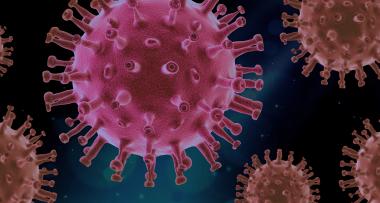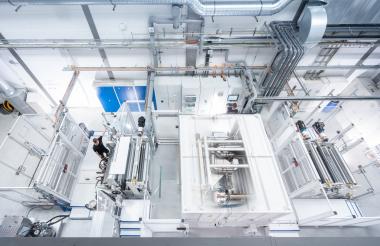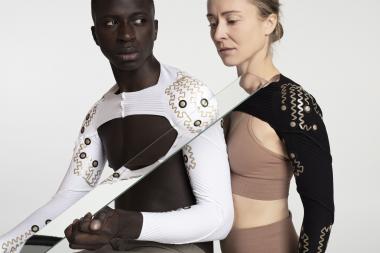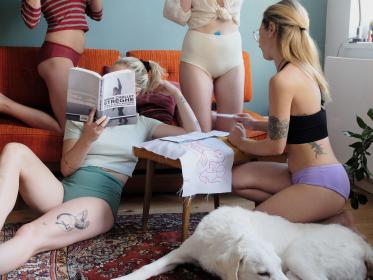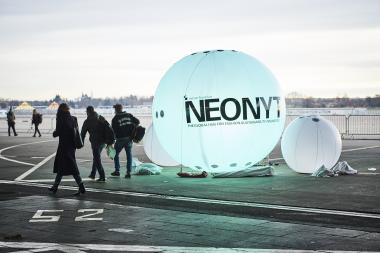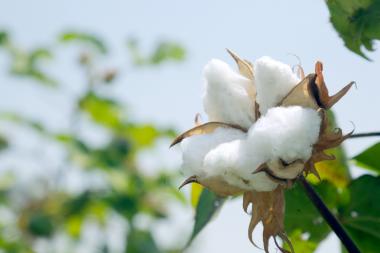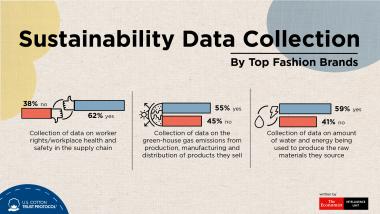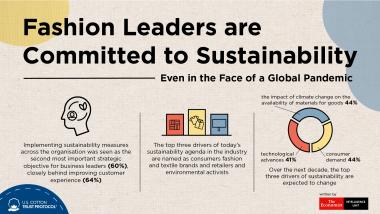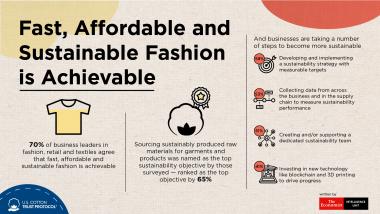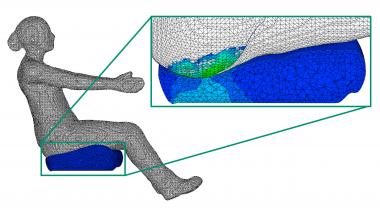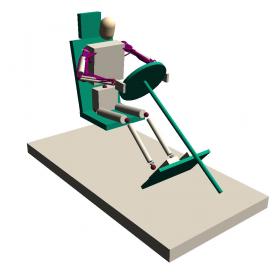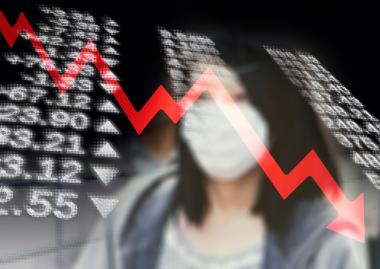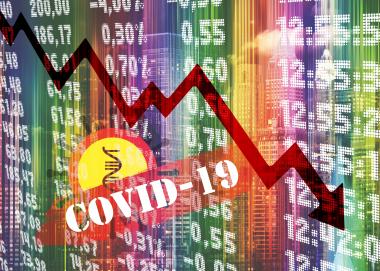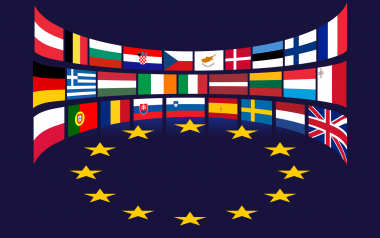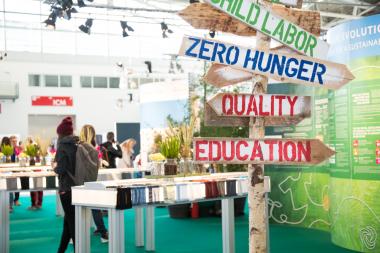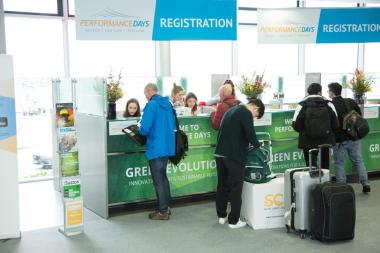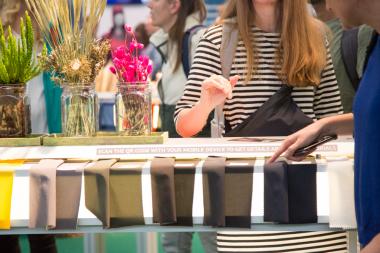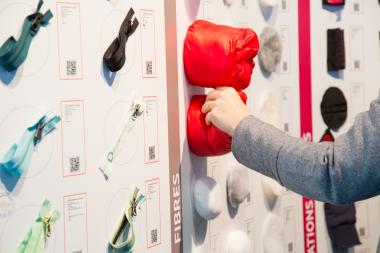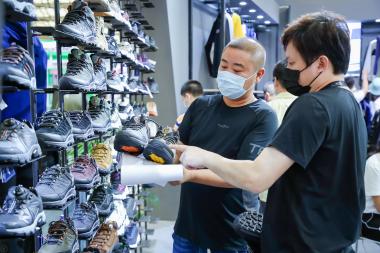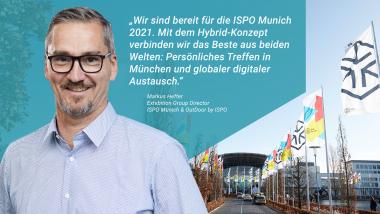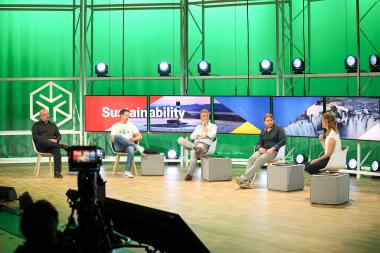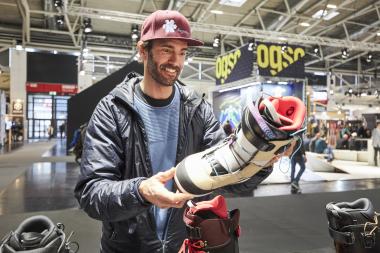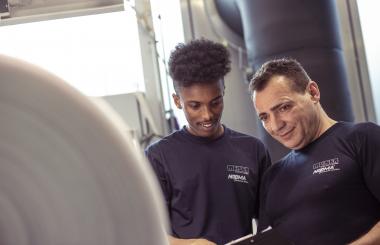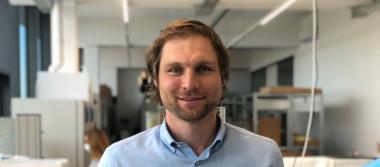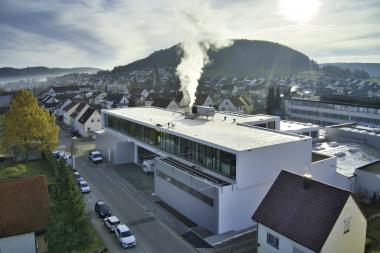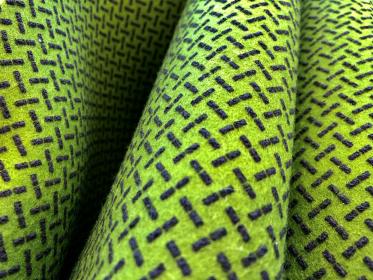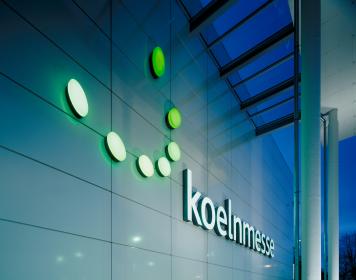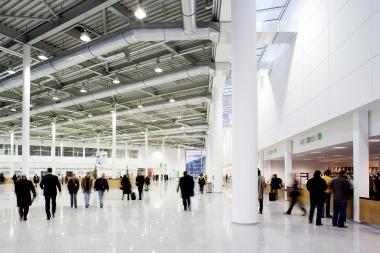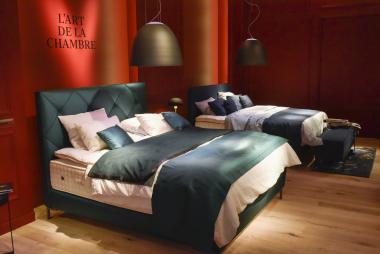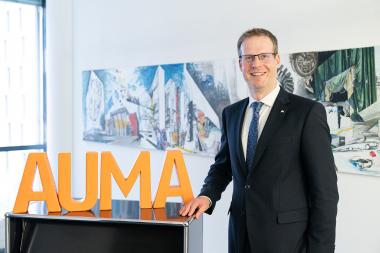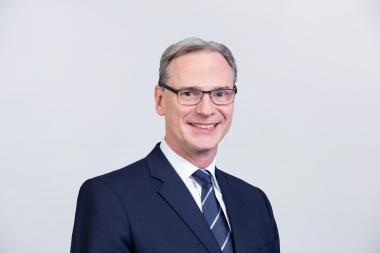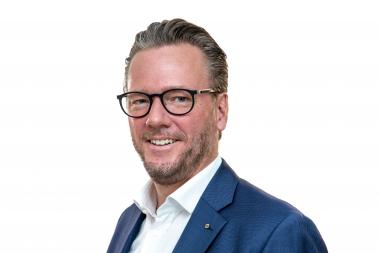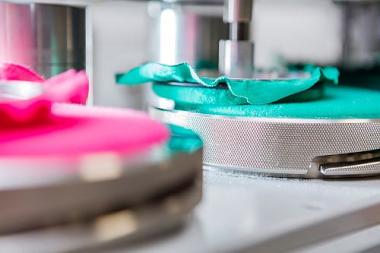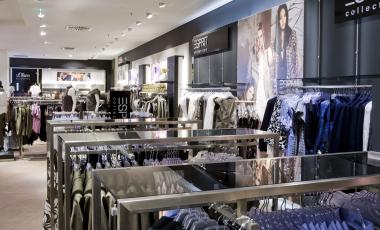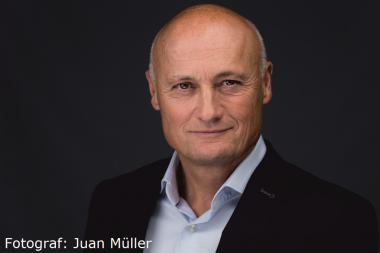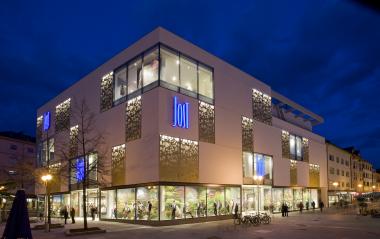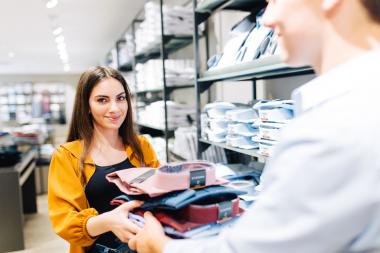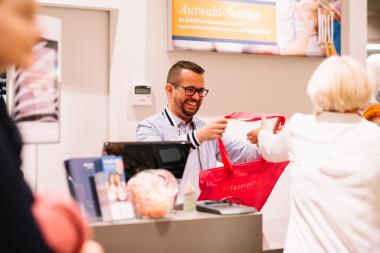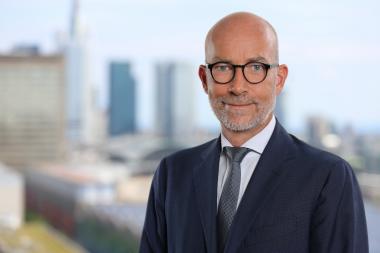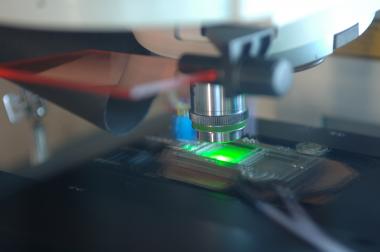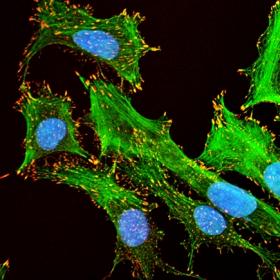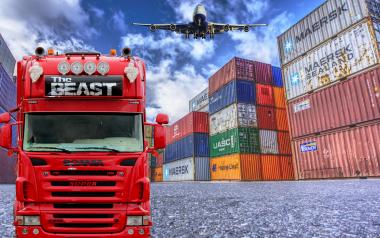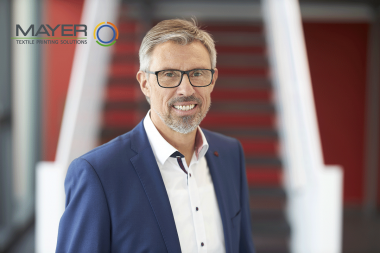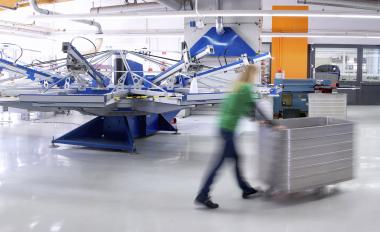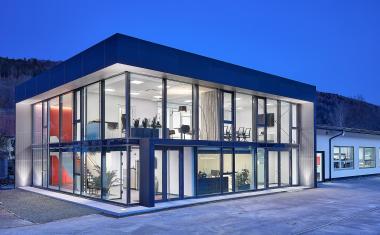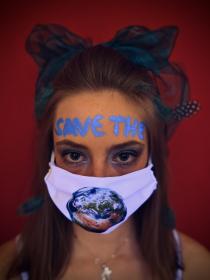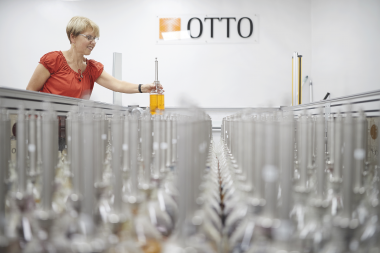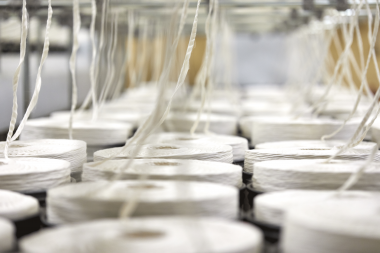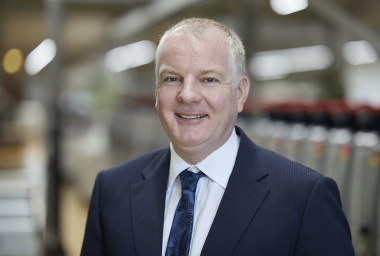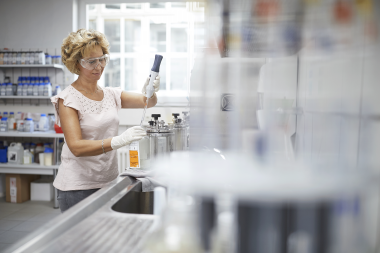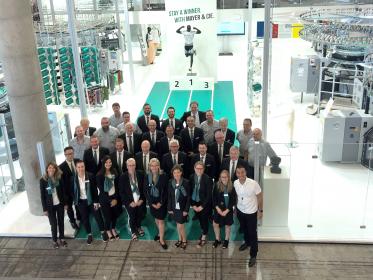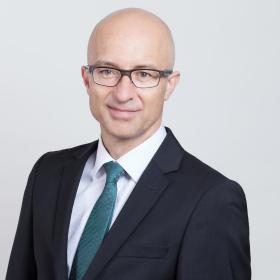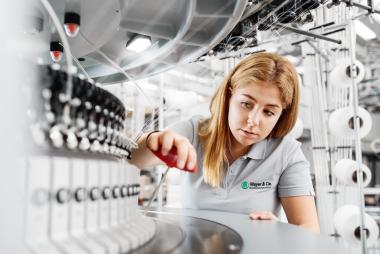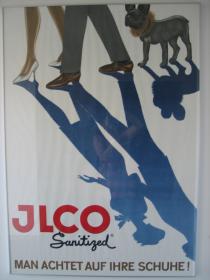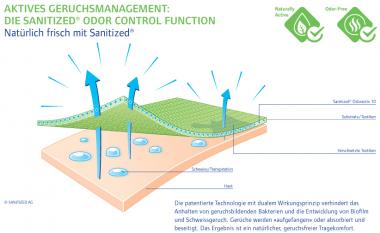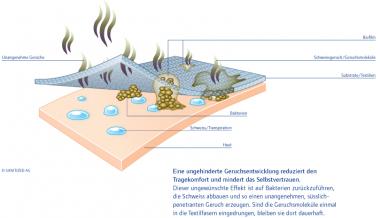Fraunhofer FEP: Boosting Innovations for COVID-19 Diagnostic, Prevention and Surveillance
The recently launched 6.1 million Euro project INNO4COV-19, funded by the European Commission (grant agreement no. 101016203), will support the marketing of new products to combat COVID-19 over the next two years, throughout Europe. The Fraunhofer Institute for Organic Electronics, Electron Beam and Plasma Technology FEP is contributing its know-how in sterilization using accelerated electrons and on near-to-eye visualization.
The €6.1 million project INNO4COV-19 is committed to supporting the commercialization of new products across Europe for combatting COVID-19 over the next two years. Looking for the fast development of products – from medical technologies to surveillance solutions - the project will boost innovation to tackle the new coronavirus, reinforcing Europe's technological leadership, and invigorating an industrial sector capable of protecting citizens' safety and well-being.
Officially starting on October 1, the virtual kick-off took place on October 6 – 7, counting with the support of two European Commission officers.
The 11-partner consortium led by INL – International Iberian Nanotechnology Laboratory, is looking for efficient and fast solutions that can help in the fight against COVID-19 jointly with the other actively involved industrial and RTO partners.
The mission of INNO4COV-19 is to create a “lab-to-fab” platform and a collaboration resource where companies and reference laboratories will find the tools for developing and implementing innovative technologies – from idea assessment to market exploitation. This work will be carried out as part the European Union Coronavirus initiative and in strong collaboration with all the funded projects where to accelerate the time to market for any promising product.
INNO4COV-19 is set to assist up to 30 test cases and applications from several areas spanning from Medical technologies, Environmental Surveillance systems, Sensors, Protection of Healthcare workers and Artificial Intelligence and Data mining. To achieve this, INNO4COV-19 is awarding half of the budget to support 30 enterprises selected through a set number of open calls during the first year of the project.
The first call will be launched in November 2020 across several platforms. Awardees will receive up to €100,000 each and benefit from the INNO4COV-19 consortium's technical, regulatory, and business expertise.
Roll-to-Roll Equipment and Electron Beam Technology for Large Area Sterilization of textile materials
During pandemic events like COVID-19, MERS, SARS or Ebola a substantial shortage of sterile materials for medical uses was observed due to peak demands. Fraunhofer FEP will contribute their roll-to-roll equipment and electron beam technology for the purpose of large area sterilization of textile materials to the INNO4COV-19 project.
Usually the textile material is produced in non-sterile conditions and therefore must be sterilized before being delivered to the consumers (e. g. hospitals); Sterilization at product level (sterilizing the final manufactured masks) is limited in throughput, due to a high number of individual small pieces, that must be sterilized.
Project manager Dr. Steffen Günther of Fraunhofer FEP explains the role and aims of the institute in more detail: “INNO4COV-19 will establish and verify a process chain for high throughput (4500 m²/h) electron beam sterilization of fabric material in roll-form in a single TRL 7 pilot machine to allow efficient manufacturing of sterile face masks and other fabric based sterile products without the need to sterilize the final product.”
OLED Microdisplays for Detecting Infected People
Another topic of Fraunhofer FEP within INNO4COV-19 deals with the earliest possible detection of infected people. A widely used strategy to early identify individuals with disease symptoms is body temperature screening using thermal cameras.
One possibility to allow continuous body temperature monitoring, is the integration of a thermal camera into a smart wearable device. Therefore, Fraunhofer FEP is using their OLED microdisplay technology. This allows small (< 3 × 2 cm²), ultrathin (< 5 mm including control circuitry) and ultra-low power (< 5 mW) devices to show visual information. In combination with an infrared sensor a thermal imager will be realized to both measure body temperature and directly displays the result via near-to-eye visualization. The system can be embedded within smart glasses, hats, caps or personal face shields.
About INNO4COV-19 project:
Website: www.inno4cov19.eu
Please contact: info@inno4cov19.eu
Fraunhofer nternational Iberian Nanotechnology Laboratory Covid-19 Medical & Healthcare medical technology fabric material electron beam sterilization
Fraunhofer Institute for Organic Electronics, Electron Beam and Plasma Technology FEP


